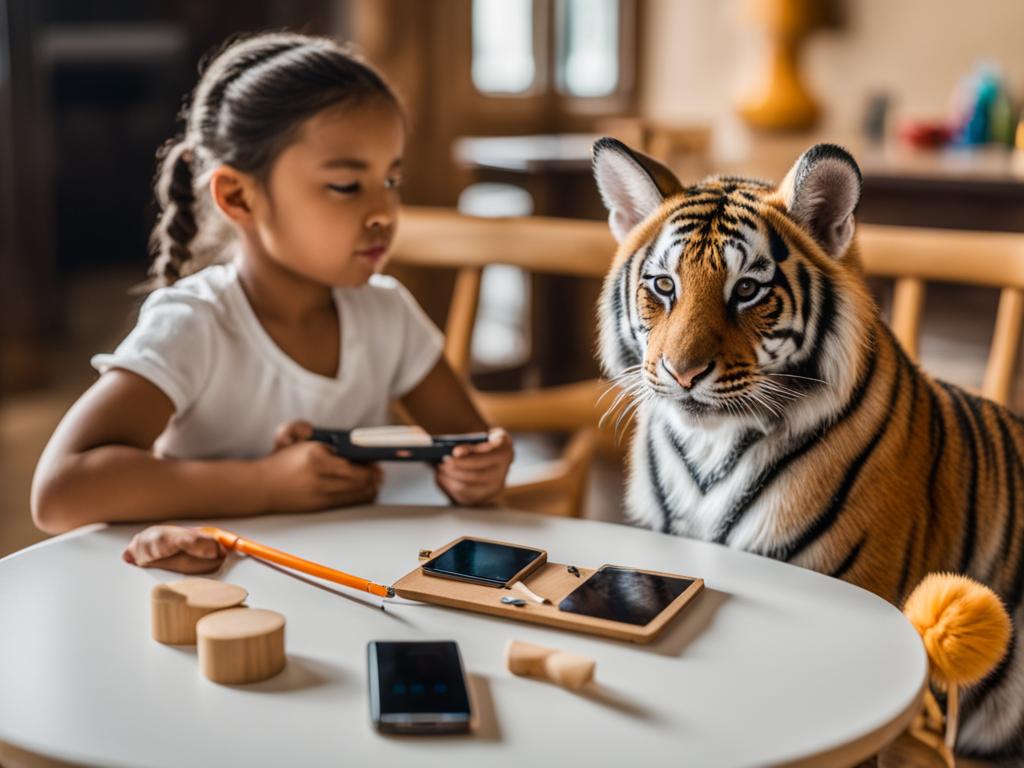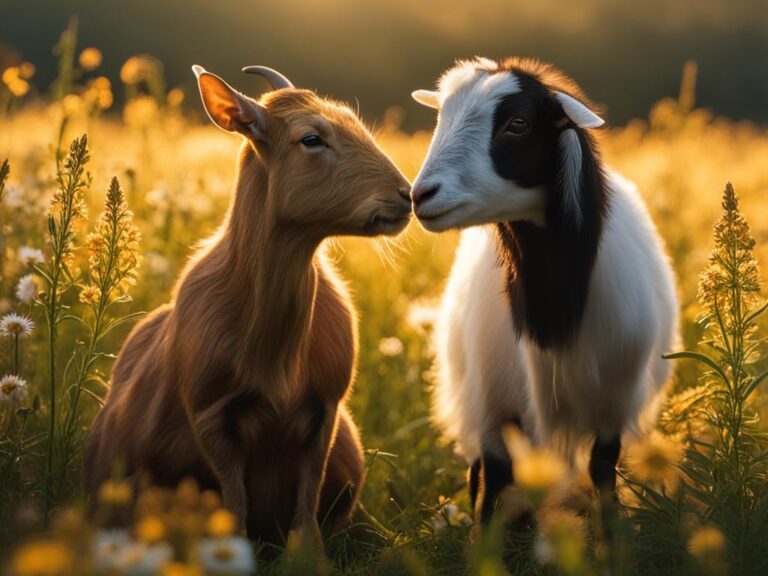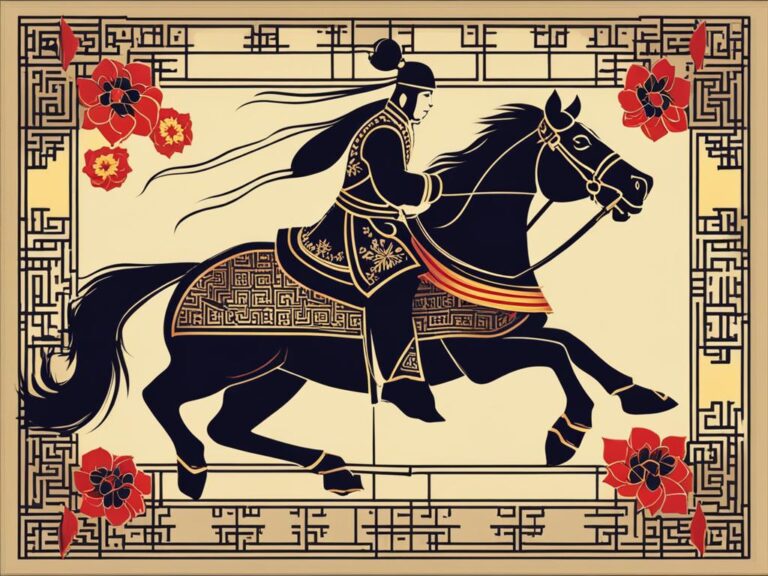
Sibling rivalry is a common phenomenon in family dynamics, and understanding the dynamics between siblings, specifically between tigers and rabbits, can provide valuable insights. According to various sources, tigers and rabbits can have conflicting personalities, which can lead to rivalry and conflict between them. It is important to explore this dynamic further to better navigate sibling relationships and promote harmony.
Key Takeaways
- Sibling rivalry is a normal part of family dynamics.
- Tiger and rabbit siblings often have conflicting personalities.
- Understanding their dynamics can help manage conflicts and promote harmony.
- Fostering open communication and empathy is important in handling sibling rivalry.
- Nurturing sibling bonds through shared experiences can strengthen relationships.
Characteristics of Tiger and Rabbit Sibling Relationships
Understanding the characteristics of tiger and rabbit sibling relationships is crucial in unraveling the complexities of sibling rivalry. Tigers and rabbits possess contrasting personality traits, often leading to conflicts and tension between them. Tigers are known for their boldness, competitiveness, and desire for excitement, while rabbits tend to be more reserved, gentle, and peace-loving.
These opposing traits can create a challenging dynamic between tiger and rabbit siblings. The adventurous nature of tigers may clash with the cautiousness of rabbits, causing misunderstandings and disagreements. The desire for dominance and the need for harmony often collide, leading to sibling conflicts and rivalry.
It is essential to recognize and acknowledge these characteristics in order to effectively manage and resolve conflicts between tiger and rabbit siblings. By understanding the inherent differences in their personalities, parents and caregivers can take proactive steps to promote understanding, empathy, and compromise among their children.
Table: Contrasting Traits of Tiger and Rabbit Siblings
| Tiger Siblings | Rabbit Siblings |
|---|---|
| Bold | Reserved |
| Competitive | Gentle |
| Exciting | Peace-loving |
Tiger siblings are known for their desire to lead and dominate, often seeking out adventurous activities. Conversely, rabbit siblings prefer a peaceful and harmonious environment, valuing stability and tranquility. These inherent differences in their personalities can fuel conflicts and rivalry between them.
By addressing these contrasting characteristics head-on and fostering open communication, parents can lay the groundwork for positive sibling relationships. Through empathy, understanding, and encouragement of shared interests, tiger and rabbit siblings can learn to appreciate each other’s unique qualities and create a more harmonious family dynamic.
Strategies for Managing Sibling Rivalry

Sibling rivalry can be a source of stress and tension within a family, but with the right strategies, parents can effectively manage and promote harmony between tiger and rabbit siblings. By implementing the following techniques, parents can create a more peaceful and supportive environment for their children.
1. Foster Open Communication
Effective communication is key to resolving conflicts and promoting understanding between siblings. Encourage your tiger and rabbit children to openly express their thoughts and feelings, while also teaching them active listening skills. Provide a safe and non-judgmental space where they can freely communicate and work through their differences.
2. Encourage Empathy and Understanding
Help your children develop empathy by encouraging them to put themselves in each other’s shoes. Teach them to consider how their words and actions may affect their siblings and to approach conflicts with understanding rather than aggression. By fostering empathy, you can promote empathy and reduce the occurrence of sibling rivalry.
3. Establish Clear Boundaries and Rules
Setting clear boundaries and rules is essential for managing sibling conflicts. Clearly define acceptable behavior and consequences for breaking the rules. This will establish a sense of structure and fairness, ensuring that both tiger and rabbit children understand their responsibilities and the consequences of their actions.
By implementing these strategies, parents can effectively manage sibling rivalry and create a harmonious environment where tiger and rabbit siblings can thrive and support each other.
Table: Conflict Resolution Techniques
| Technique | Description |
|---|---|
| Active Listening | Encourage siblings to listen attentively to each other’s concerns and perspectives without interrupting. |
| Collaborative Problem-Solving | Guide siblings in finding mutually beneficial solutions to their conflicts by working together. |
| Positive Reinforcement | Reward cooperative behavior and positive interactions between siblings to encourage harmony. |
| Time Apart | Provide separate spaces and activities to allow siblings to have individual time and reduce potential conflicts. |
Tips for Handling Sibling Conflicts

Sibling conflicts are a natural part of family life, but it’s important to have effective strategies in place to handle them. When it comes to tiger and rabbit siblings, understanding their unique dynamics can help in resolving rivalry and promoting a healthier relationship. Here are some tips to handle sibling conflicts:
1. Remain Calm and Neutral
When mediating conflicts between tiger and rabbit siblings, it’s crucial for parents to stay calm and neutral. Getting emotionally involved or taking sides can escalate the situation. By remaining level-headed, you can create a safe space for both siblings to express their feelings and find a resolution.
2. Encourage Communication and Empathy
Encouraging open communication and empathy is key to resolving sibling conflicts. Teach your children to listen to each other’s perspectives and understand how their actions affect one another. By fostering empathy, they can develop a deeper understanding of each other’s feelings and work towards finding solutions together.
3. Teach Problem-Solving Skills
Help your tiger and rabbit siblings develop problem-solving skills by teaching them effective strategies. Encourage them to brainstorm ideas, consider different perspectives, and find compromises. By empowering them to work through conflicts on their own, you’re equipping them with valuable skills that will benefit their relationship in the long run.
4. Avoid Playing Favorites
One common cause of sibling conflicts is the perception of favoritism. It’s important for parents to treat their tiger and rabbit siblings equally and avoid showing favoritism. This helps to prevent feelings of resentment and ensures a fair and harmonious sibling dynamic.
Remember, handling sibling conflicts takes time and patience. By implementing these strategies, you can create a positive environment where tiger and rabbit siblings can learn to resolve their differences, strengthen their bond, and develop a lifelong connection.
| Handling Sibling Conflicts: Tips for Parents |
|---|
| Remain Calm and Neutral |
| Stay composed and impartial when mediating conflicts between siblings. |
| Encourage Communication and Empathy |
| Foster open communication and teach siblings to understand each other’s feelings. |
| Teach Problem-Solving Skills |
| Empower siblings to find solutions together through brainstorming and compromise. |
| Avoid Playing Favorites |
| Treat all siblings equally to prevent feelings of favoritism and resentment. |
Promoting Sibling Communication

Effective communication is the cornerstone of fostering healthy sibling relationships. By encouraging open and respectful communication between tiger and rabbit siblings, parents can create an environment where conflicts are addressed and resolved in a constructive manner. This not only helps siblings understand each other better but also strengthens their bond as they navigate the challenges of sibling dynamics.
One way to promote sibling communication is by providing opportunities for family discussions. These discussions can revolve around various topics, from sharing experiences and emotions to resolving conflicts. By setting aside dedicated time for open dialogue, parents can create a safe space where tiger and rabbit siblings feel comfortable expressing their thoughts and concerns.
Active listening is another crucial skill that parents can teach their children to enhance sibling communication. Encouraging tiger and rabbit siblings to actively listen to each other’s perspectives fosters empathy and understanding. This can be done by reiterating the importance of listening without interrupting and validating each sibling’s point of view.
“When siblings feel heard and understood, it lays the foundation for a healthy and harmonious relationship,” says child psychologist Dr. Sarah Mitchell. “Parents can play a significant role in teaching and modeling effective communication skills that will benefit their children both in childhood and beyond.”
Fostering Empathy and Understanding
In addition to promoting open communication, fostering empathy and understanding is essential for building strong sibling relationships. Parents can encourage tiger and rabbit siblings to put themselves in each other’s shoes and consider the impact of their words and actions. This helps develop a sense of compassion and sensitivity towards one another.
By fostering healthy sibling relationships through promoting communication, empathy, and understanding, parents can help tiger and rabbit siblings grow into individuals who support and uplift each other. These skills not only benefit sibling relationships but also translate to positive interactions in other areas of their lives.
| Benefits of Promoting Sibling Communication | Ways to Promote Sibling Communication |
|---|---|
| 1. Enhances mutual understanding and empathy | 1. Encourage family discussions |
| 2. Resolves conflicts in a constructive manner | 2. Teach active listening skills |
| 3. Builds a solid foundation for a harmonious relationship | 3. Foster empathy and understanding |
| 4. Improves overall communication and conflict resolution skills | 4. Set clear boundaries for respectful communication |
Nurturing Sibling Bonds

Building strong sibling bonds is essential for fostering a positive and supportive family environment. Parents play a crucial role in nurturing these relationships, especially between tiger and rabbit siblings. By engaging in activities that encourage cooperation, communication, and appreciation, parents can strengthen the sibling connection and promote long-lasting bonds.
Shared Experiences and Collaborative Projects
One effective way to nurture sibling bonds is by creating opportunities for shared experiences and collaborative projects. These activities allow tiger and rabbit siblings to work together towards a common goal, fostering teamwork and cooperation. Whether it’s planning a family outing or working on a DIY project, these shared experiences provide a platform for siblings to learn from each other, compromise, and build trust. By encouraging collaboration, parents can create a positive foundation for sibling relationships to flourish.
Showcasing Appreciation for Individual Qualities
Each child has unique talents and qualities that deserve recognition and appreciation. Parents can nurture sibling bonds by showcasing and celebrating these individual traits. Providing specific praise and encouragement for their accomplishments helps foster a sense of pride and self-worth in each sibling. This recognition also enables siblings to support and cheer each other on, enhancing the bond between tiger and rabbit siblings.
| Sibling | Individual Qualities |
|---|---|
| Tiger | Confident, determined, adventurous |
| Rabbit | Gentle, caring, creative |
Encouraging Open Communication
Effective communication is the cornerstone of any strong relationship, including sibling bonds. Parents can foster open communication between tiger and rabbit siblings by creating a safe and non-judgmental space for them to express their thoughts and feelings. Encouraging active listening and empathy helps siblings better understand each other’s perspectives and strengthens their connection. By promoting open communication, parents can facilitate healthy interactions and problem-solving among tiger and rabbit siblings.
By nurturing sibling bonds through shared experiences, appreciation for individual qualities, and open communication, parents can strengthen the relationship between tiger and rabbit siblings. These efforts create a foundation of trust, support, and camaraderie within the family. With these strong bonds, tiger and rabbit siblings can navigate challenges, resolve conflicts, and build lifelong connections.
Conclusion
Sibling rivalry is a natural part of family dynamics, and understanding the specific dynamics between tigers and rabbits can be beneficial in managing conflicts and promoting sibling harmony. By employing strategies such as effective communication, conflict resolution skills, and nurturing sibling bonds, parents can help create a harmonious environment for tiger and rabbit siblings to thrive.
Effective communication plays a vital role in promoting sibling harmony. By encouraging open and respectful communication between tiger and rabbit siblings, parents can provide them with the tools to express their feelings and understand each other better. Teaching active listening skills and promoting empathy and understanding can further strengthen their bond.
Conflict resolution skills are essential in managing sibling rivalry. Parents can teach problem-solving techniques to tiger and rabbit siblings, encouraging them to find compromises and resolve conflicts peacefully. By remaining neutral and promoting equality and fairness, parents can ensure that conflicts are resolved in a just manner.
Nurturing sibling bonds is crucial for promoting a healthy relationship between tiger and rabbit siblings. Creating opportunities for shared experiences, such as family outings and collaborative projects, can foster teamwork and cooperation. By appreciating and celebrating each child’s unique qualities and talents, parents can reinforce a positive sibling bond.
With patience, understanding, and support, families can navigate sibling rivalry and foster positive sibling relationships. By implementing these strategies and recognizing the importance of promoting sibling harmony, parents can create an environment where tiger and rabbit siblings can grow, learn, and thrive together.
FAQ
What is sibling rivalry?
Sibling rivalry refers to conflicts and competition between siblings. It is a common phenomenon in family dynamics.
Why do tiger and rabbit siblings often have conflicts?
Tigers and rabbits can have conflicting personalities, with tigers being bold and competitive, and rabbits more reserved and peace-loving. These opposing traits can create tension and conflicts between them.
How can parents promote harmony between tiger and rabbit siblings?
Parents can foster open communication, encourage empathy and understanding, establish clear boundaries and rules, and help siblings find common interests and activities to bond over.
What should parents do when mediating conflicts between tiger and rabbit siblings?
Parents should remain calm and neutral, listen to both sides, encourage expression of feelings, teach problem-solving skills, encourage compromise, avoid playing favorites, and promote equality and fairness between siblings.
How can effective communication help in maintaining healthy sibling relationships?
Parents can encourage tiger and rabbit siblings to communicate openly and respectfully by providing opportunities for family discussions, teaching active listening skills, and promoting empathy and understanding.
How can parents strengthen the bond between tiger and rabbit siblings?
Parents can facilitate bonding by encouraging shared experiences such as family outings and vacations, engaging in collaborative projects and games, and showing appreciation for each child’s unique talents and qualities.





